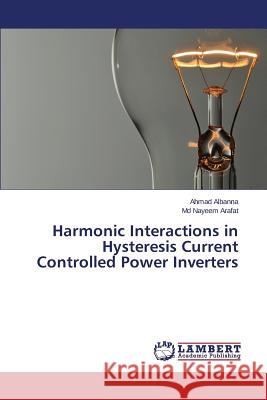Harmonic Interactions in Hysteresis Current Controlled Power Inverters » książka
Harmonic Interactions in Hysteresis Current Controlled Power Inverters
ISBN-13: 9783659615245 / Angielski / Miękka / 2014 / 116 str.
The book provides analytic frequency-domain models that use system and controller parameters to accurately characterize the power conversion harmonics as well as modulation/demodulation processes resulting from the deployment of hysteresis current-controlled inverters in power systems. AC and DC harmonic interactions under both ideal and non-ideal (distorted) system conditions are derived and verified for the fixed- and variable-band hysteresis controllers. The spectral characteristics, such as frequency orders, spectral magnitude and bandwidth, are given in terms of line and controller parameters, a development not only useful in analyzing the harmonic output sensitivity to line and controller parameter variations, but also in filter and system design. Various simulation studies compared results obtained from the developed models to those obtained from the Fourier analysis of MATLAB/Simulink output with very good agreement. The developed models proved their reliability and improved numerical efficiency in harmonic studies compared to those performed using time-domain simulations.
The book provides analytic frequency-domain models that use system and controller parameters to accurately characterize the power conversion harmonics as well as modulation/demodulation processes resulting from the deployment of hysteresis current-controlled inverters in power systems. AC and DC harmonic interactions under both ideal and non-ideal (distorted) system conditions are derived and verified for the fixed- and variable-band hysteresis controllers. The spectral characteristics, such as frequency orders, spectral magnitude and bandwidth, are given in terms of line and controller parameters, a development not only useful in analyzing the harmonic output sensitivity to line and controller parameter variations, but also in filter and system design. Various simulation studies compared results obtained from the developed models to those obtained from the Fourier analysis of MATLAB/Simulink output with very good agreement. The developed models proved their reliability and improved numerical efficiency in harmonic studies compared to those performed using time-domain simulations.











